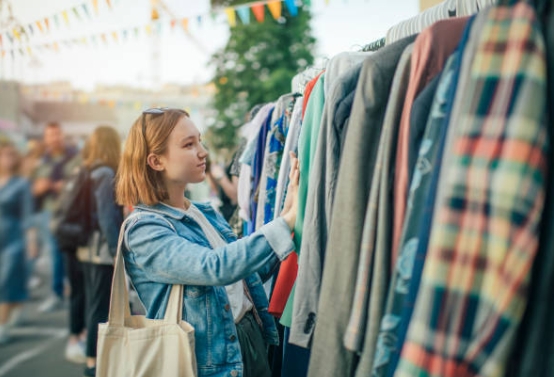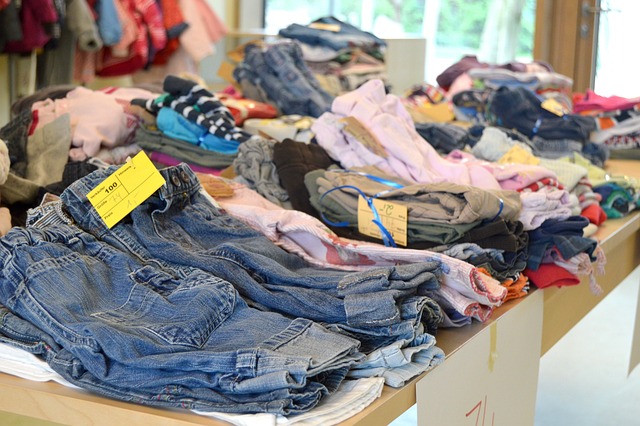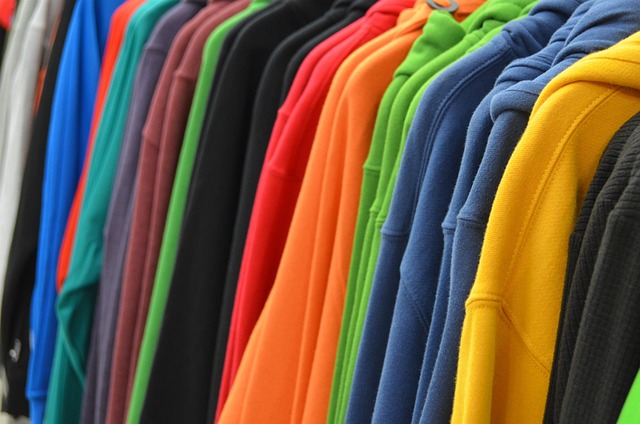The rise of the secondhand clothing trade reflects a broader cultural shift towards sustainability. As more individuals recognize the environmental impact of their choices, secondhand fashion offers an accessible way to make a difference. From thrift stores to online marketplaces, the options for purchasing secondhand clothes are expanding, making it easier than ever to join the movement towards responsible fashion consumption.

Secondhand Fashion
The environmental impact of fast fashion is staggering, with the industry responsible for a significant portion of global waste and pollution. Each year, millions of tons of clothing end up in landfills, contributing to soil and water contamination. In contrast, secondhand fashion offers a sustainable alternative that helps mitigate these harmful effects. By choosing pre-loved garments, consumers not only reduce the demand for new production but also extend the life cycle of existing clothing. This shift towards secondhand fashion not only conserves resources but also plays a crucial role in combating the environmental crisis posed by the fast fashion industry.
Statistics on Clothing Waste
The statistics surrounding clothing waste are alarming, with the fashion industry generating over 92 million tons of textile waste each year. This staggering figure highlights the urgent need for more sustainable practices within the industry. Secondhand fashion presents a viable solution to this crisis, as it encourages the reuse of garments and significantly reduces the amount of clothing that ends up in landfills. By purchasing secondhand items, consumers can actively participate in minimizing waste and promoting a more sustainable approach to fashion.
The Carbon Footprint of Fast Fashion
The carbon footprint of fast fashion is a significant contributor to global greenhouse gas emissions, with the industry accounting for approximately 10% of all emissions worldwide. This alarming impact results from the resource-intensive processes involved in producing cheap, disposable clothing. In contrast, secondhand fashion helps to lower this carbon footprint by giving new life to pre-owned garments, thereby reducing the demand for new production and the associated environmental costs. By embracing secondhand clothing, consumers can make a conscious choice to lessen their impact on the planet and promote a more sustainable fashion industry.
Understanding Secondhand Fashion
Secondhand fashion refers to the practice of purchasing and wearing pre-owned clothing, which has gained immense popularity in recent years. This movement encompasses various types of garments, from thrift store finds to vintage pieces and online resale platforms. As consumers become more environmentally conscious, the appeal of secondhand fashion lies not only in its affordability but also in its sustainability. By embracing pre-loved clothing, individuals contribute to a circular economy, where garments are reused and recycled rather than discarded. Understanding the significance of secondhand fashion is essential for anyone looking to make more responsible choices in their wardrobe while promoting a more sustainable future for the fashion industry.
Definition and Types of Secondhand Clothing
Secondhand fashion encompasses a wide range of clothing items that have been previously owned and are now being resold or donated. This category includes everything from vintage dresses and designer pieces to everyday wear sourced from thrift stores and online platforms. By definition, secondhand clothing is any garment that has had a prior owner, and it often comes with a unique story and character that new clothing lacks. Embracing secondhand fashion allows consumers to express their individuality while making environmentally responsible choices.
The Growth of the Secondhand Market
The secondhand market has experienced remarkable growth in recent years, driven by a combination of sustainability awareness and changing consumer behaviors. With platforms like Depop, Poshmark, and ThredUp gaining traction, secondhand fashion has become more accessible than ever. This expansion reflects a broader shift towards eco-conscious living, as more people recognize the negative impact of fast fashion on the environment. As the secondhand market continues to thrive, it not only provides a sustainable alternative to new clothing but also fosters a sense of community among those who value creativity and sustainability in their fashion choices.
Benefits of Secondhand Fashion
Secondhand fashion offers numerous benefits that extend beyond just affordability. One of the most significant advantages is its positive environmental impact, as purchasing pre-owned clothing helps reduce waste and the demand for new production, ultimately conserving resources. Additionally, secondhand fashion promotes unique style, allowing individuals to find one-of-a-kind pieces that reflect their personality and creativity. Furthermore, engaging in the secondhand market often supports local businesses and charities, fostering a sense of community and social responsibility. By choosing secondhand fashion, consumers not only make a more sustainable choice but also contribute to a more ethical and inclusive fashion industry.

Environmental Benefits
Secondhand fashion plays a crucial role in promoting environmental sustainability by significantly reducing textile waste and resource consumption. By choosing pre-owned garments, consumers help divert millions of tons of clothing from landfills, where they would contribute to pollution and greenhouse gas emissions. Additionally, the production of new clothing often requires vast amounts of water and energy, which can be drastically minimized by embracing secondhand options. This sustainable practice not only supports a healthier planet but also encourages a shift towards more eco-friendly consumption habits.
Economic Advantages for Consumers
One of the most appealing aspects of secondhand fashion is its economic advantages for consumers. Purchasing pre-owned clothing is often much more affordable than buying new items, allowing shoppers to find high-quality brands and unique pieces at a fraction of the retail price. This financial benefit makes it easier for individuals to build a diverse and stylish wardrobe without breaking the bank. Moreover, the rise of online resale platforms has made it even easier for consumers to access secondhand fashion, creating a thriving market where they can save money while making sustainable choices.
Promoting Creativity and Individuality
Secondhand fashion is not just about sustainability; it also encourages creativity and individuality in personal style. By exploring thrift stores and online resale platforms, consumers can discover unique pieces that set them apart from mainstream fashion trends. This treasure-hunting aspect of secondhand shopping inspires individuals to mix and match items, creating distinctive outfits that reflect their personality. Embracing secondhand fashion fosters a sense of creativity and self-expression, allowing fashion enthusiasts to curate wardrobes that are not only stylish but also truly one-of-a-kind.
How to Incorporate Secondhand Fashion into Your Wardrobe
Incorporating secondhand fashion into your wardrobe is an exciting and sustainable way to refresh your style. Start by exploring local thrift stores, consignment shops, and online platforms that specialize in pre-owned clothing. When shopping, keep an open mind and look for versatile pieces that can be styled in various ways. Mixing secondhand items with your existing wardrobe allows you to create unique outfits that reflect your personal aesthetic. Additionally, consider setting a goal to include a certain percentage of secondhand clothing in your overall wardrobe to encourage more sustainable shopping habits. By thoughtfully integrating secondhand fashion, you not only reduce your environmental impact but also enjoy the thrill of finding one-of-a-kind treasures that express your individuality.

Tips for Thrifting
When diving into the world of secondhand fashion, thrifting can be an exhilarating experience if approached with a few key tips. First, visit stores during off-peak hours to have a better chance of finding hidden gems without the crowds. Take your time to browse through different sections, as treasures can often be found in unexpected places. Additionally, don’t hesitate to try on various styles and sizes; vintage and secondhand pieces may fit differently than new clothing. Lastly, keep an open mind—sometimes the most unique and stylish outfits come from items that require a little creativity to pull together.
Online Platforms for Secondhand Shopping
The rise of online platforms has revolutionized secondhand fashion, making it easier than ever to find pre-loved clothing from the comfort of your home. Websites and apps like Poshmark, Depop, and ThredUp offer extensive selections of secondhand items, catering to various styles and budgets. When shopping online, be sure to read descriptions and check measurements carefully to ensure a good fit. Additionally, follow your favorite sellers or brands to stay updated on new listings. This convenience not only expands your wardrobe options but also supports sustainable practices by promoting the reuse of clothing.
Styling Secondhand Finds
Styling secondhand fashion allows for endless creativity and personal expression. When incorporating thrifted pieces into your outfits, consider how to blend them with your existing wardrobe for a cohesive look. Mix vintage items with modern staples to create a unique aesthetic that showcases your individual style. Don’t be afraid to experiment with layering, accessorizing, and tailoring to enhance the fit and appearance of secondhand finds. By embracing secondhand fashion, you can craft distinctive outfits that not only reflect your personality but also contribute to a more sustainable approach to style.
Conclusion
In conclusion, secondhand fashion serves as a powerful tool for promoting sustainability and reducing waste in the fashion industry. By choosing pre-owned garments, consumers can make a positive impact on the environment while expressing their unique style. The benefits of secondhand fashion extend beyond individual choices, fostering a more sustainable economy and encouraging responsible consumerism. As the popularity of secondhand shopping continues to grow, it is essential for everyone to recognize its potential to transform the fashion landscape. Embracing secondhand fashion not only helps us reduce our carbon footprint but also empowers us to make mindful decisions that contribute to a healthier planet for future generations.

Recap of the Importance of Secondhand Fashion
Secondhand fashion plays a vital role in addressing the environmental challenges posed by the fast fashion industry. By opting for pre-owned clothing, consumers can significantly reduce waste, lower their carbon footprint, and promote a more sustainable approach to style. The rise of secondhand shopping not only encourages the reuse of garments but also fosters creativity and individuality, allowing individuals to curate unique wardrobes that reflect their personal tastes. As we recognize the importance of secondhand fashion, it becomes clear that every choice we make can contribute to a more sustainable future.
Call to Action for Sustainable Consumer Choices
As we move forward, it is crucial to embrace secondhand fashion as a primary option in our shopping habits. By making conscious choices to buy pre-owned clothing, we can collectively drive demand for sustainable practices within the fashion industry. Join the movement by exploring local thrift stores, utilizing online platforms for secondhand shopping, and sharing your finds with others. Let’s champion the value of secondhand fashion not just as a trend, but as a responsible lifestyle choice that benefits both our wallets and the planet. Together, we can make a significant impact in creating a more sustainable and ethical fashion landscape.






